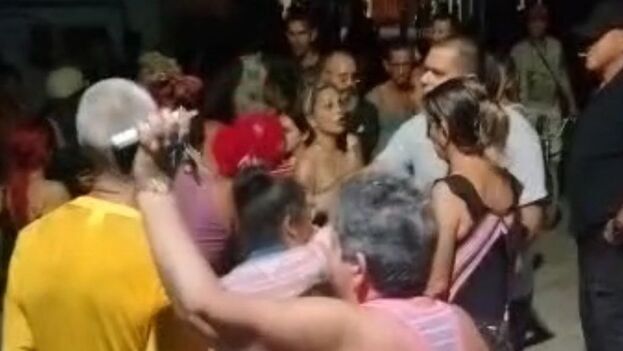
![]() EFE/14ymedio, Miami/Havana, 1 November 2022 — In October, the Observatory of Cuban Conflict (OCC), based in Miami (U.S.), logged 589 public protests, diverse in nature, including 71 in the streets with cacerolazos (banging on pots and pans), marches, and barricades — almost double the 43 in September.
EFE/14ymedio, Miami/Havana, 1 November 2022 — In October, the Observatory of Cuban Conflict (OCC), based in Miami (U.S.), logged 589 public protests, diverse in nature, including 71 in the streets with cacerolazos (banging on pots and pans), marches, and barricades — almost double the 43 in September.
The total number of protests in October was even greater than those documented in July 2021 (584), during the social uprising known as 11J, informed OCC in a statement.
Of the 589 demonstrations that occurred in October, 263 were related to political and civil rights (45% of the total), while 326 began with demands for economic and social rights (55%).
According to OCC’s statement, “the Cuban government repeatedly reverted to blocking the internet in the areas where these demonstrations were reported to avoid ‘contagion’ and a national chain reaction.”
“Its only response to the growing demands of the population continues to be repression and judicial proceedings against the protesters it manages to identify, rather than lend itself to reverse the critical reality that produces these protests,” says the Observatory.
In its monthly analysis of governability in Cuba, the organization found that, in October, it reached its lowest point since 11J.
In Bejucal, a municipality in Mayabeque province, for example, Communist Party leaders had to endure shouts of “Freedom in Bejucal”, “A people united will never be divided” and “They must go,” during the nighttime protest on October 10th.
That same day in Caibarién, in Villa Clara province, a man yelled “The day of freedom could be today!” while barely filming the protesters marching with his mobile phone. Women, fathers carrying their children on their shoulders, elderly people, pedi-cab drivers and electric motorcycles traveled the streets of that municipality.
Little by little in the protests throughout the entire country the tone was raised and they not only included cacerolazos and marches, but also barricades in the streets along with expressions of rejection toward the repressive forces. In Havana, the mobilization of police operatives, undercover State Security agents, and military recruits armed with clubs to repress in areas such as Línea Street in El Vedado, caused a wave of indignation and denunciations.
Many of the protesters who took to the streets in October did so to demand a political change, but a large majority demanded something so simple as having the lights on in their homes or for the power not to be shut off every two or three hours. Despite this, about thirty arrests were made, according to several NGOs, and some of those arrested could end up serving time in prison.
Translated by: Silvia Suárez
____________
COLLABORATE WITH OUR WORK: The 14ymedio team is committed to practicing serious journalism that reflects Cuba’s reality in all its depth. Thank you for joining us on this long journey. We invite you to continue supporting us by becoming a member of 14ymedio now. Together we can continue transforming journalism in Cuba.
